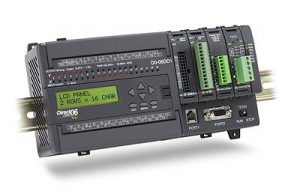Back in 1977, Ken Olsen, the founder of Digital Equipment Corporation made this bold statement – “There is no reason anyone would want a computer in their home.” Some argue that Olsen made this quip before the introduction of the personal computer (PC) as we know it, but within four years of Olsen’s remark, the release of IBM’s PC gave his quote a permanent spot in the computing hall of shame.
The majority of machines scattered around our offices and homes today are direct descendents of IBM’s first PC. Of course, PCs existed prior to this; the Apple II and the Commodore PET came out in 1977 and the Atari 800 was released in 1979, but these systems used proprietary components and designs. IBM was in a hurry to release its version, so other companies’ technologies were used, including a processor from Intel and an operating system from Microsoft.
machines scattered around our offices and homes today are direct descendents of IBM’s first PC. Of course, PCs existed prior to this; the Apple II and the Commodore PET came out in 1977 and the Atari 800 was released in 1979, but these systems used proprietary components and designs. IBM was in a hurry to release its version, so other companies’ technologies were used, including a processor from Intel and an operating system from Microsoft.
The PC’s lack of proprietary IBM technology made cloning possible, and just one year later, Colombia Data Products released their clone, effectively creating the IBM PC as a standard that many others would adopt.
The industrial world
In industrial control, we are used to formal standards governing every day processes. For instance, IEC 61439 compliance has been mandatory since November 2014, so it would be wise for anyone buying or thinking of buying a motor control centre (MCC) to seek a supplier that meets all relevant parts of the standard.
Equally, it is beneficial for the communications between the MCC and the rest of the control system to include Fieldbus, Ethernet and wireless technology covered by IEC 61158-1:2014, IEEE 802.3, IEEE 802.11 and IEC61850.
Ethernet evolved with developments in office infrastructure in the early 1970s. Momentum gathered in 1979 when Digital Equipment Corporation, Intel and Xerox began cooperatively promoting it as a local area network communications solution. In 1983, the related standard IEEE 802.3 was published. Ethernet quickly became the network of choice in commerce.
Uptake for industrial control was limited to supervisory functions until the development of Industrial Ethernet (IE) protocols enabled real time control. Fast forward to today and Ethernet is now, arguably, the network of choice for the industrial world.
PLC
Although programmable logic controllers (PLCs) have been around for a decade longer than the IBM PC, the development cycle is much slower. This leads to lower sales volumes and a higher cost of change for the users. The PLC is still at a non- standardised point in its evolution, equivalent to the Apple II, Atari 800, Commodore PET era of PCs in 1978. However, there have been attempts to change this.
For example, in 1993 the IEC 61131-3 standard set down a unified suite of programming languages for PLCs. In 2005, the complimentary standard – IEC 61499 – followed by addressing system architectures. The aim of both standards was to enable interoperability in much the same way as the PC standard did, but they have largely failed. Most mainstream PLC vendors have a degree of compatibility, but true interoperability is unheard of between them.
One of the major contributions to the cost of change – when replacing old PLCs with new – is the need to rewrite the application code. In relative terms, the price of PLC hardware has fallen significantly. What this means for the end user is that they get a product that is faster, has more memory, takes up less space and probably costs less in real terms than the PLC being replaced.
On the other hand, writing application code is still a relatively bespoke activity that requires skilled engineers. Where original system documentation has disappeared or never existed, it may be necessary to go back to the beginning of the software development lifecycle and create a new specification and code which needs to be tested and installed.
In many cases, mounting downtime or the possibility that no more spares are available, drives the end user to make changes.
While PCs and PLCs have the same basic architecture, the evolution has been very different. The PC became ubiquitous and interoperable in the 1980s, while the PLC is still lagging behind, despite all the years of diligent work on IEC standards.
Source: http://www.engineerlive.com/content/technology-and-standards-close-connection




